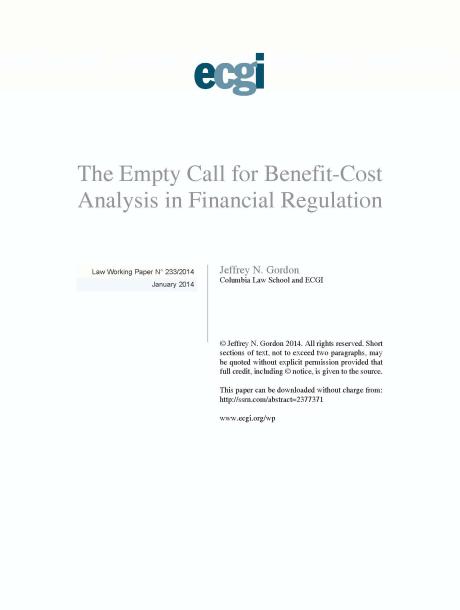
The Empty Call for Benefit-Cost Analysis in Financial Regulation
Abstract
?Benefit-cost analysis? as applied to financial regulation is a serious category mistake
that has the potential to stymie regulation aimed at the reduction of systemic risk in
favor of privileging a status quo that we know is unstable. Benefit-cost analysis, which gained prominence from its applications in health, safety, and environmental regulation, contemplates an omniscient social planner who can calculate costs and benefits generated by a system that is essentially stable, because it rests on natural constraints, in particular the laws of chemistry, biology, and physics. By contrast, finance is a constructed system, created by financial regulation itself and subsequent adaptations. Any non-trivial new rule would change the system of finance in ways that are hard to foresee and thus would undercut the value of a prior calculation of benefits and costs. Instead, optimal financial regulation policy should be understood as based on a series of trade-offs of values that are normatively derived, for example: the desire to achieve the economic benefits from the free flow of capital and the ready availability of credit as balanced against the risks of systemic distress and the associated economic disruption. These value trade-offs will produce subsidiary principles of pragmatic design, for example: minimize the extent to which financial institution can free-ride on systemic stability costs paid by others; provide regulators with sufficient information to observe the build-up of imbalance in the financial system and the power to make regulatory modifications accordingly. Rather than insist on a meaningless, if not misleading, benefit cost analysis that seems not required by any substantive regulatory statute, a reviewing court should apply rationality review to a regulatory agency?s application of pragmatic judgment.






